Aprilia RS 457 vs Kawasaki Ninja 500 vs Yamaha YZF-R3: 300km Road Trip Comparison
We embark on a 300km journey on three of the finest supersport twins in the world. Which one would reign supreme at the end?
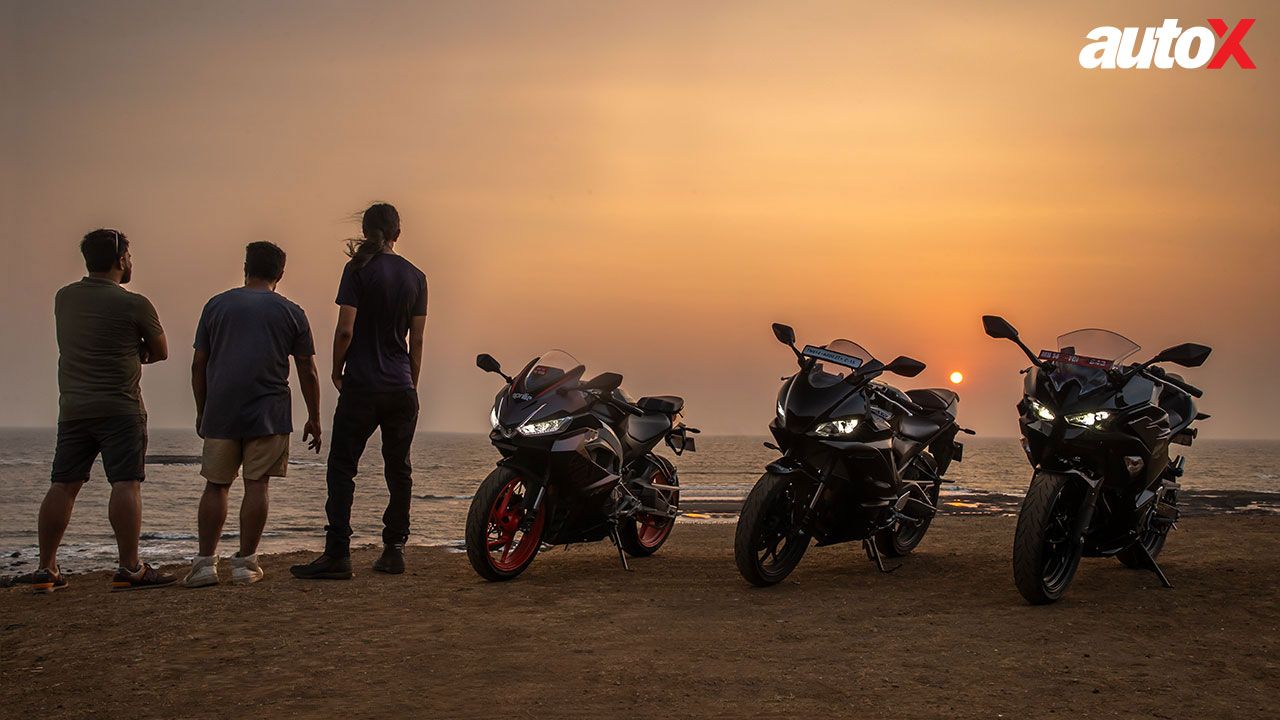
Whether it’s the number of bedrooms in your apartment, the size of your phone, or your credit card tiers, you’re always striving to go one better in life. It’s a similar story with motorcycles, you see. You usually start with a small single-cylinder 100 – 150cc motorcycle in the early days and then slowly climb your way up to bigger, more powerful, multi-cylinder motorcycles. That’s how it’s supposed to be – a natural progression.
In India, however, upgrading to more cylinders has been somewhat of a privilege, especially for those interested in fully-faired / supersport motorcycles. You see, once you hit the ceiling of single-cylinder performance, your options to have one-more-cylinder between your legs were severely limited, and exorbitantly expensive, it goes without saying. So, instead of opting for a sub-500cc twin, most bikers would directly graduate to bigger middle-weight, or even litre-class, motorcycles. But that kind of leap isn’t for everyone. It’s a bit like transitioning from flying economy to flying first class in a fortnight.
So, what an average enthusiast wants is more of a premium economy experience – a slightly more upmarket and sophisticated riding experience that won’t leave them broke. And that’s precisely what the all-new Aprilia RS 457 is all about.
Sure, it’s not the first time that we’ve seen a twin-cylinder sub-500cc supersport in India –there have been many that have come (and gone) in the past. However, none came with the conviction of the RS 457 – the first world-class supersport twin that’s produced right here in India, for Indian riders. Come to think of it, neither the industry heavyweights, like Honda, Yamaha, and KTM, nor homegrown players, like Bajaj and TVS, dared to do what Aprilia has done with the RS 457. It isn’t just a bold move to make a statement; it’s one deserving of high praise.
With the RS 457, Aprilia hasn’t just given the sports bike fans of the country what they had been asking for but has also revived the entry-level supersport twin segment in the process. So, right after the RS 457’s global unveil, Yamaha pulled up their socks and promptly brought forth the updated R3 to the country, while Kawasaki wasted no time in launching the new Ninja 500 in India. Consequently, the budget supersport twin segment, all of a sudden, has started buzzing again.
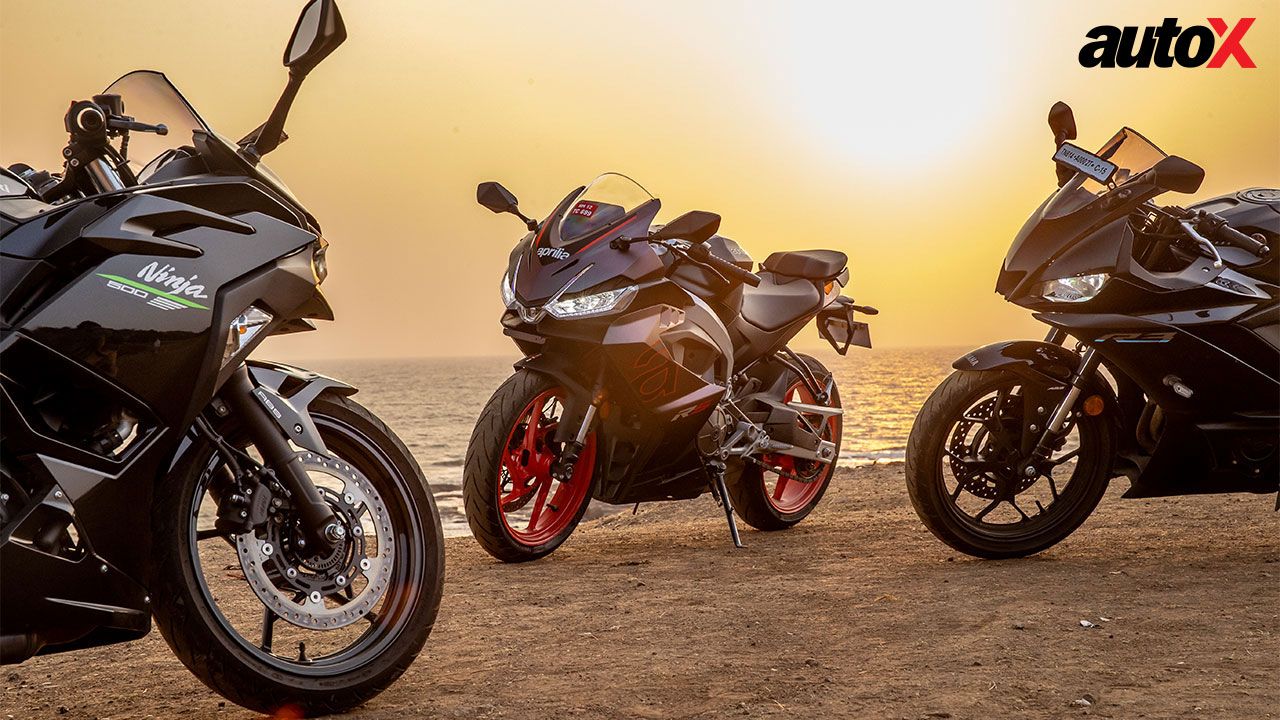
There’s no denying that, on paper, the Aprilia has the measure of its rivals, and thanks to its stellar pricing, it’s simply irresistible. Earlier this year, I went to experience the RS 457 at a racetrack during its press ride and came back convinced that it’s the best supersport twin in the country. However, like they say, one swallow doesn’t make a summer. So, to truly ascertain its standing, we decided to put Noale’s latest marvel through its paces in the real world – over a 300km coastal road trip. To ensure objectivity, we enlisted its arch-rivals – the YZF-R3 and Ninja 500 – to join the ride. This coastal adventure threw everything at these bikes – from smooth stretches to broken roads, straight highways to winding paths, pothole-ridden roads to choked streets, and everything in between! Assisting me in evaluating the Aprilia against its rivals, and vice-versa, on this journey were my teammates Aakash and Karan – two different kinds of riders. Suffice it to say that after the end of the journey, the verdict was far from a foregone conclusion. How and why? Read on to find out...
Aprilia RS 457: The Mountain Banshee
Since the Aprilia is the centre of attraction of the segment, let’s kick off the proceedings with it. At the start of our journey, its keys were hotly contested among the three of us for obvious reasons. The Aprilia is, without doubt, the most attractive and athletic-looking machine of the trio, and it impeccably embodies the supersport ethos. The proportions are bang on the money, while the design screams of its racing pedigree. It’s got the Aprilia RS genes well and truly ingrained in its bodywork, and it’s fair to say if it weren’t for its relatively slimmer tyres, most onlookers would easily mistake it for a bigger Aprilia (think the RS 660). Plus, in the Prismatic Dark colour option, it looks as predatory as Pandora’s Mountain Banshees.
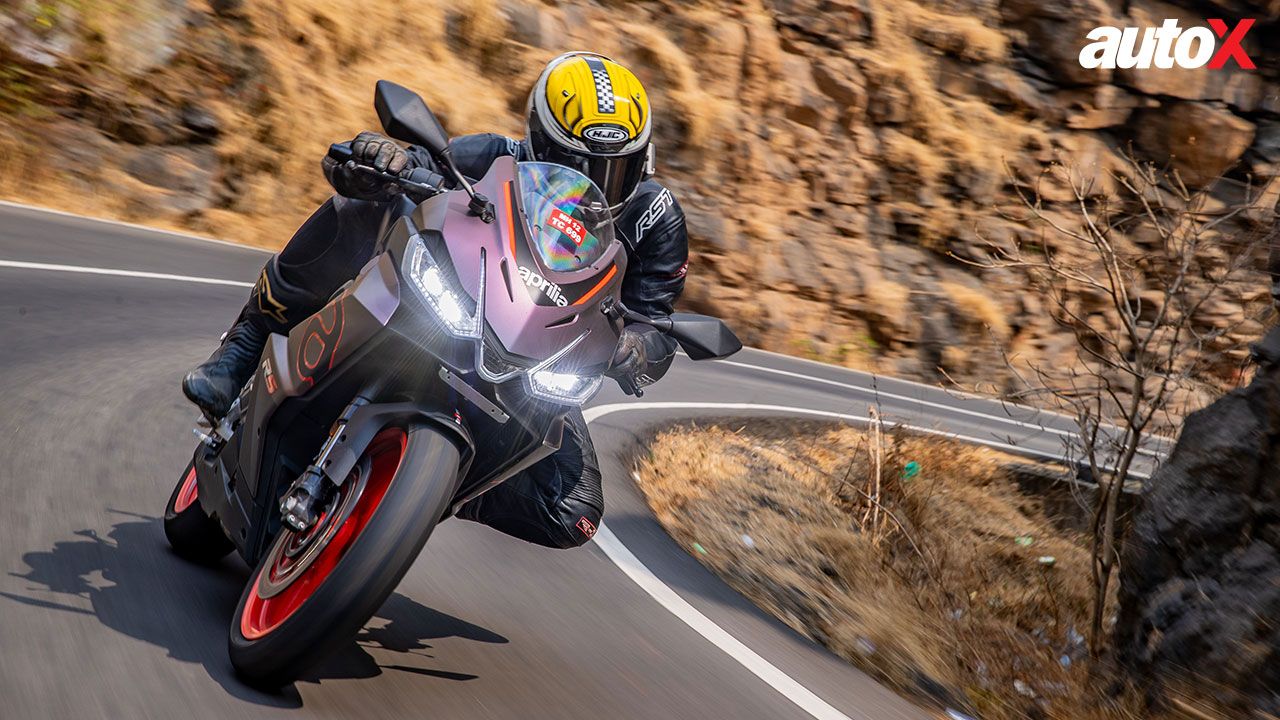
What’s even more gratifying is that the RS 457’s riding experience is even better. The 457cc twin-cylinder motor, featuring a 270-degree crank, is a fire-breather of an engine. Not only does it offer a heady mix of power and torque but it also sounds glorious – almost like a ‘big’ bike. You can always hear the Aprilia coming from a distance. There’s a sense of occasion every time you’re on it, or around it.
During the ride, Karan just couldn’t stop raving about the Aprilia – ‘It’s so easy to ride this motorcycle fast. The noise it produces is too addictive, like music to my ears,’ he would say. That’s true, and for a hooligan like Karan, it’s a tailor-made motorcycle. Interestingly, Aakash, who’s more sedate in his approach, was equally thrilled by the RS 457’s performance – ‘This is one gnarly motorcycle. Remember the old KTM Dukes? How they would almost try to kill you, in a good way? It’s just like that. If you want thrill or fun, this is the one to go for!’
Then, there’s the handling – it’s simply sublime. The Aprilia is as sharp as a surgeon’s scalpel around bends – it tips into corners effortlessly and makes quick direction changes a breeze. It’s fluid, agile, and follows your commands like an obedient disciple. The riding position is, of course, sporty but not a backbreaker – you are not completely hunched forward. Plus, the clip-ons are tall and wide, meaning you have a lot of leverage and space to move around when you’re shifting your body in corners. However, one peculiar limitation is the absence of heel plates on both sides; instead, your foot rests on the swingarm, which, given its constant movement, leads to strange sensations.
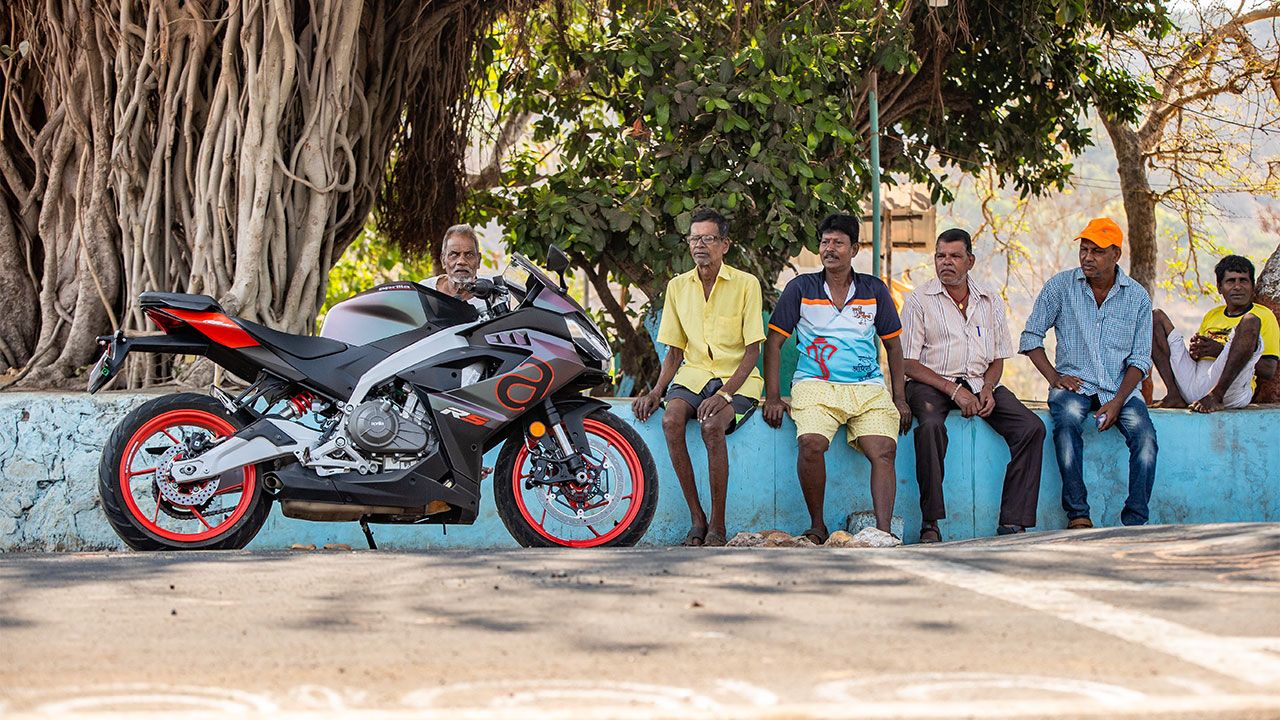
What further enhances the whole experience are the features and electronics. It has a 5-inch colour TFT display, which is modern and premium, along with three riding modes, switchable ABS, and traction control with three levels of adjustment. These aren’t just superficial additions; there’s a marked difference in performance when you toggle between modes.
Is the RS 457 flawless, though? Not really. And we realised it only when we rode the other two contenders.
Also Read: Aprilia RS 457 Review
Kawasaki Ninja 500: Black Magic
On the face of it, the Ninja is probably the most underwhelming motorcycle here because it’s the most expensive and doesn’t offer anything extraordinary – at least on paper – as compared to the Aprilia. Also, it’s not a 500 – it has a 451cc twin unit, which is smaller than the Aprilia’s engine. It’s quite surprising because usually, it’s the Italians who exaggerate and not the Japanese. Fair to say, the odds were stacked against the Kawasaki.
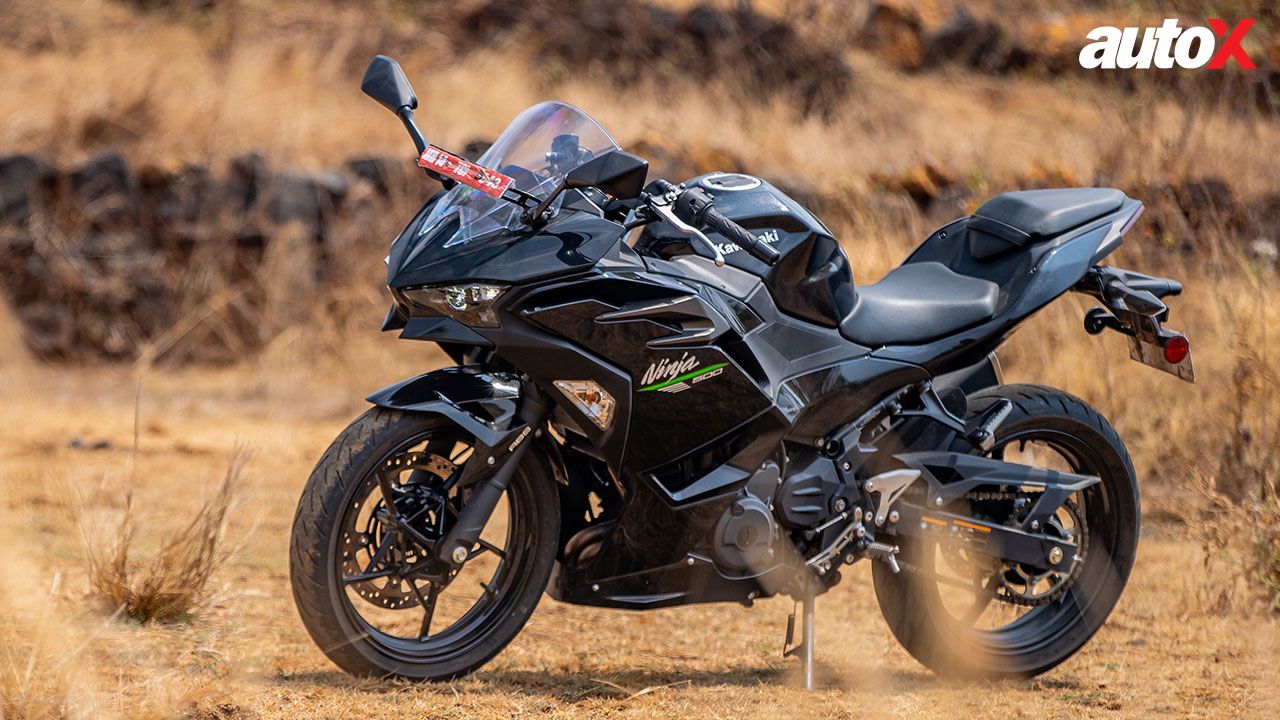
But that’s the thing about motorcycles. They tell one story on paper and a completely different one in the real world. The Ninja 500 is a classic case of this. It may not have the flash of the Aprilia, but it’s an excellent motorcycle for the road. ‘It’s quite methodical in terms of acceleration, handling, and braking. It’s more relaxed and more versatile. It’s just so smooth,’ remarked Karan.
Aakash, too, had nice things to say about it – ‘Some might think it’s boring because the black colour [only option available in India] undermines its size a bit, but it’s a mean-looking machine. Big and burly, it has typical Kawasaki ZX aggression on its face.’
It doesn’t take too long to realise that the Ninja 500 is effortlessly and deceptively quick. And that’s the beauty of it. You can do license-cancelling speeds without even realising. Sure, its parallel-twin motor lacks the drama of the Aprilia’s, but it makes up for it with its silky-smooth and super tractable powertrain, thanks to its motor’s thick and uninterrupted torque supply. Ride both motorcycles back-to-back, and you can immediately feel that the Aprilia is gruff, with more pronounced vibrations through the pegs and bars, unlike the Ninja.
Similarly, the Ninja’s rider’s triangle is more relaxed. Rather than a pure supersport experience, the Ninja leans towards a sports-tourer feel – relatively relaxed ergonomics with less stress on your wrists. If you are into munching miles, the Ninja simply trumps the Aprilia as a tourer, thanks to its effortless nature, comfortable riding experience, and seamless performance.
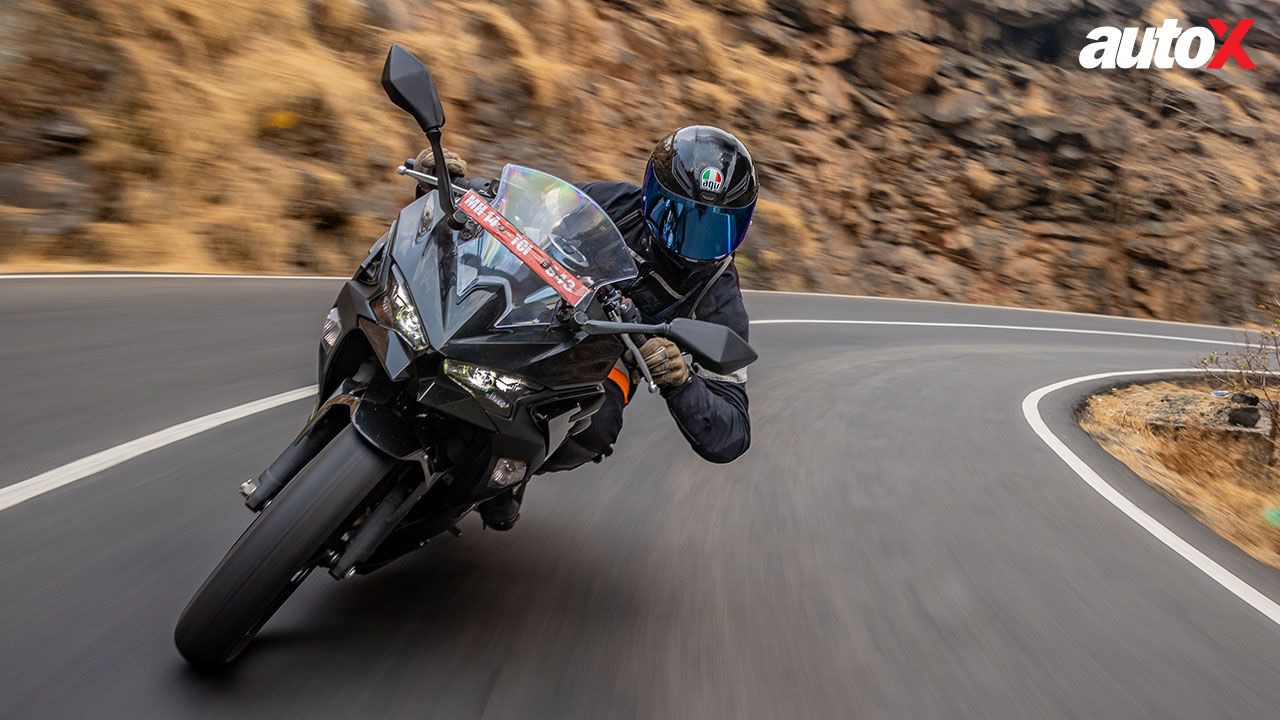
The Ninja’s suspension setup is yet another of its highlights. It may not have the more advanced upside-down forks, but its conventional forks are absolute perfection for Indian roads. Nothing unsettles the Ninja. During the test, it felt the most absorbent of the lot, and also the most forgiving. At the same time, there’s nothing sloppy about its handling. Sure, it’s not as quick turning or agile as the Aprilia, but it’s an able handler nonetheless, and one that’s more than willing to play along if you’re in a mood to have a bit of knee-down fun. It also has amazing brakes, providing strong and consistent bite compared to the occasionally vague feel of the Aprilia’s.
Another thing that I noticed while riding the Ninja and RS 457 back-to-back was that the Aprilia’s suspension felt a lot choppier on bumpy sections of the road compared to the Kawasaki. While the Ninja takes everything on the road in its stride, the RS 457’s ride tends to be jittery on the not-so-perfect tarmac.
That said, the Ninja doesn’t get riding modes and traction control, and that’s a miss. But then, you have to be an absolute idiot to crash this thing since it’s as caring as your mother. And, dare I say, that’s what makes it a bit boring. It lacks the thrills and excitement of the Aprilia. Yes, it’s fast and comfortable, but everything sort of happens in the background – you don’t really connect with the motorcycle.
Yamama YZF-R3: Yin and Yang
Let’s now turn our attention to the Yamaha R3. Now, first things first, I have spent a good two years living with the previous-gen R3, so I have a soft spot for the Yamaha. If you ask me, I would say that the previous R3 was the best motorcycle for Indian road conditions. It was plenty fast, super comfortable, unbelievably refined, brilliant looking, and offered excellent ride-and-handling balance. I was head over heels in love with the R3 back then, period. However, this was seven years ago. The world isn’t the same anymore. So, does the new R3, which is a rehashed version of the old model, still make sense?
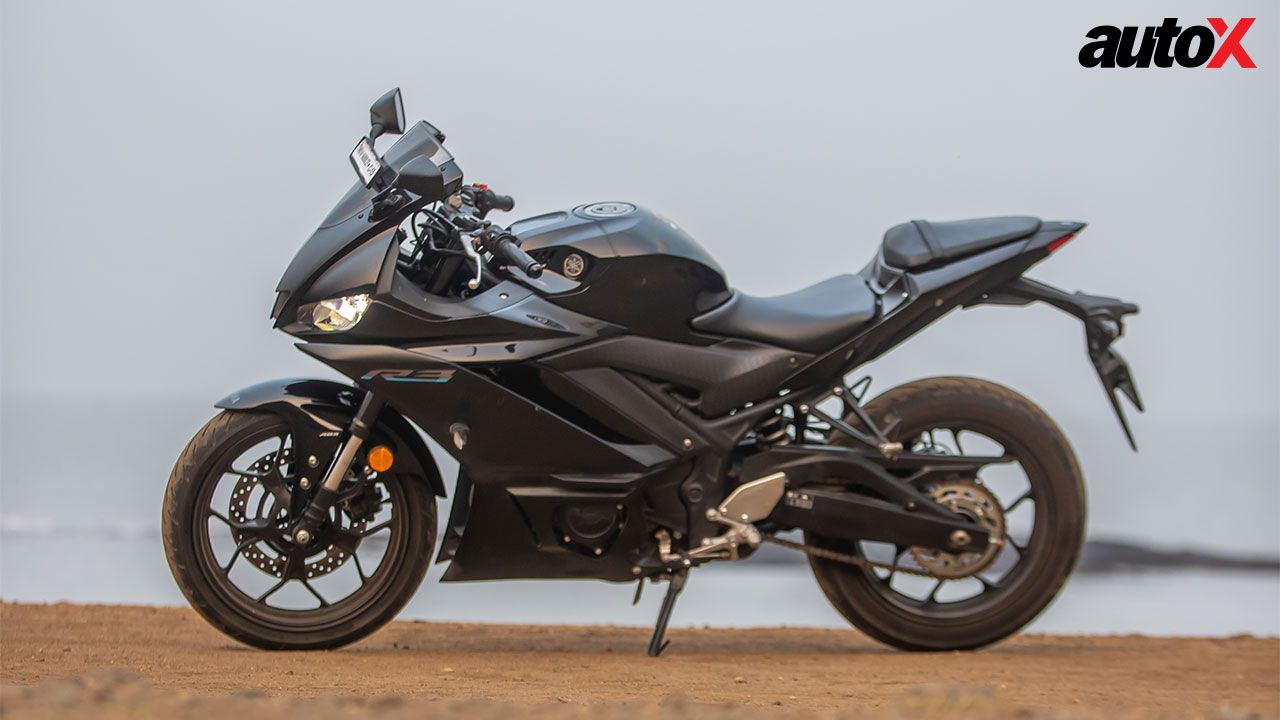
The arrival of the RS 457 undoubtedly made life difficult for the R3. Add to that its premium pricing – ₹55,000 more than the Aprilia – and the whole proposition becomes even more unfathomable. Not to mention, with a 321cc engine, producing 41.4bhp and 29.3Nm, it’s severely handicapped in the game of top trumps against its two rivals. But, then, who would disagree that an underdog makes for a great story?
The R3 is the kind of motorcycle that flies under the radar. In terms of performance and thrills, it sits somewhere between the Aprilia and the Kawasaki. It’s not an outright wild child, but it’s not a wallflower either. It’s got a bit of this and a bit of that, you know!
The Yamaha’s parallel twin is a bit more old-school – it wants you to wring its neck to exploit its full performance. Suffice it to say, it’s an enjoyable process since the engine can rev all the way up to 12,000rpm and produces a sweet, raspy tone while you’re at it. It’s refined and smooth, especially compared to the Aprilia, but it’s not in the same league as the Kawasaki. However, owing to newer (tighter) emission norms, the engine now feels strained and relatively weak at low revs – it’s quite evident that the more stringent BS6 norms have taken some of the zing out of this twin motor.
Compared to the other two, the Yamaha’s six-speeder feels a bit notchy in operation and the lack of a slipper clutch results in relatively heavier clutch action. During hard downshifts / aggressive engine braking, you may notice the rear wheel skipping. Like the Kawasaki, there are no modern electronic frills here – no traction control or riding modes, and no colour TFT display either. It's a bit of a downer really, considering its price tag!
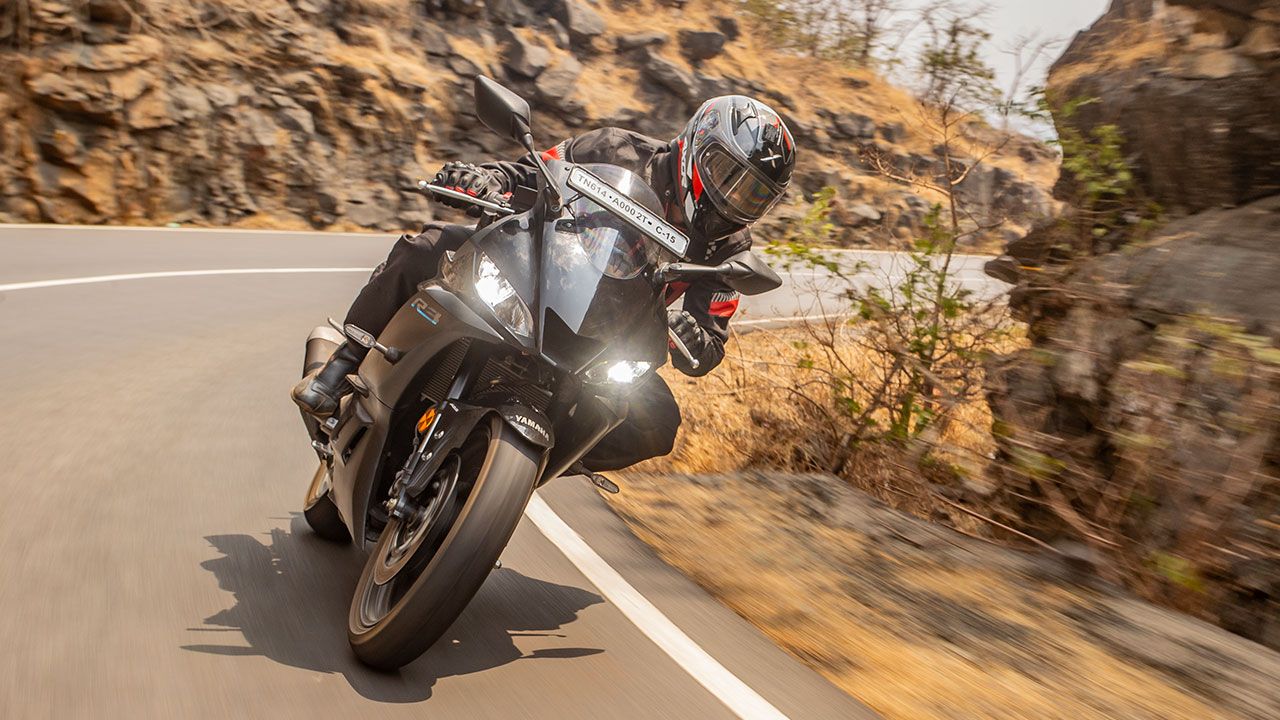
But all is forgiven once you ride it hard and fast! The R3 has that typical seat-of-the-pants Yamaha feel about it. It fits like a glove as soon as hop on it. You start to have fun the moment you get going. Its sense of familiarity, compact dimensions, and forgiving nature invite you to take liberties. It may not be as engrossing to ride as the Aprilia, but it definitely has more character than the Ninja.
The biggest surprise for me was its more aggressive ergonomics compared to the old R3, which was more of a relaxed sports tourer like the Ninja 500. The clip-ons are narrow and lower, and the pegs are slightly more rear-set. It’s not as aggressive as the RS 457, but it surely veers towards the supersport side of things now. It also gets more sophisticated upside-down forks, which work wonders. The R3’s ride-and-handling balance is bang on the money. It’s not as sharp as the Aprilia, but it’s front-end is communicative enough to not let the RS 457 leave its sight on a set of twisting roads. Similarly, in terms of shock absorption, it exhibits the suppleness of a Ninja. It’s much of the same story with the brakes. The progression and feedback from the lever are remarkable, and it definitely feels a tad more confidence-inspiring than the Aprilia – not as good as the Kawasaki, though. The Yamaha and Kawasaki both roll on Dunlop tyres, which offer more-than-satisfactory grip levels and performance. However, all three of us found the Aprilia’s TVS ProTorq rubber to be better than the Dunlops.
Also Read: Yamaha R3, MT-03 1000Km Review
Aprilia RS 457 vs Kawasaki Ninja 500 vs Yamaha YZF-R3: Verdict
Let’s address the elephant in the room first – the Yamaha and Kawasaki’s exorbitant price tags. Since both are CBUs, they are priced at ₹4.65 lakh and ₹5.24 lakh (both ex-showroom), respectively, making them expensive propositions compared to the locally manufactured Aprilia, which costs ₹4.10 lakh (ex-showroom). So, if you’re looking to get the most bang for your buck, the RS 457 is the clear winner. However, if you care more about what you want from your motorcycle than what it offers you for the money, you need to dig deeper.
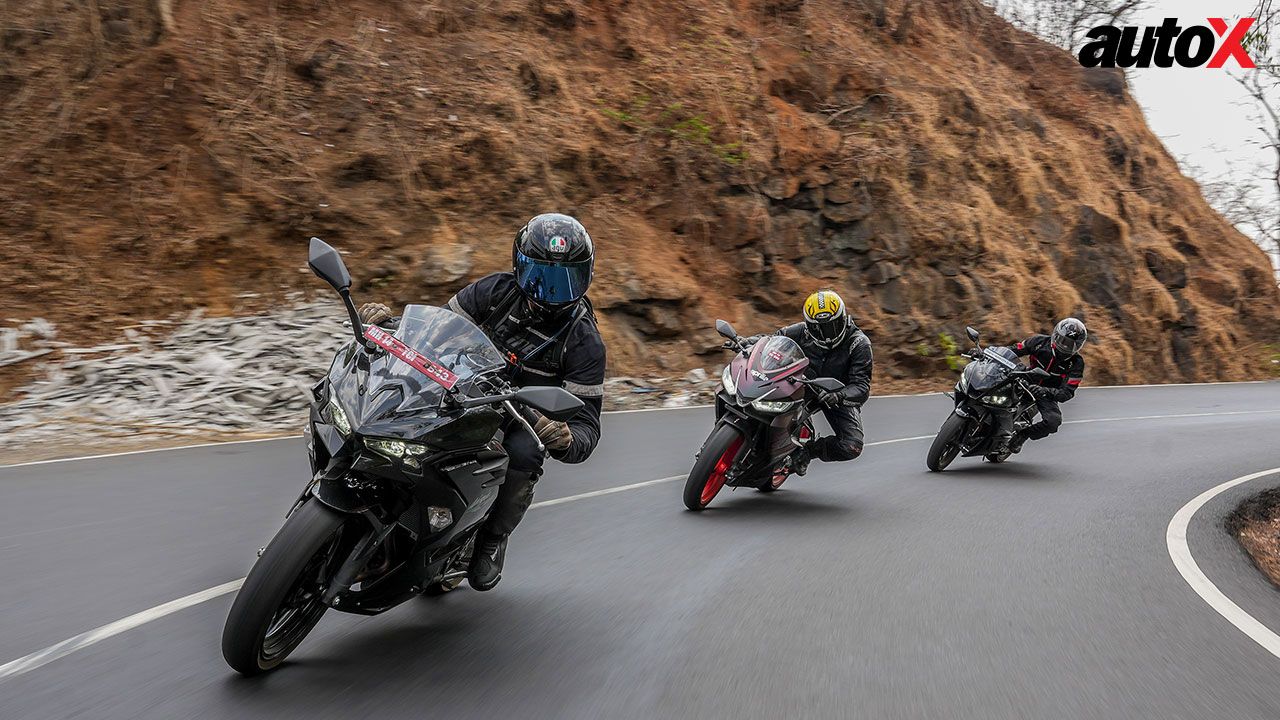
The R3, first. It’s a captivating supersport, with a strong fan following and bullet-proof reliability. It may have the smallest engine of the lot, but it can keep up with the big boys. Similarly, it may not have the fancy bits and bobs of the Aprilia, but in terms of pure riding connection with the motorcycle, the R3 can match the RS 457 pound-for-pound. Had it not been for its premium pricing, the Yamaha would easily sway a lot of buyers away from the Aprilia camp solely based on the trust and bonding that bikers share with Yamaha in the country.
If you’re a mature rider who doesn’t feel old yet, you will love the Ninja 500 experience more than the other two. You want to ride fast and put your knee down? Well, it will do it for you. You want to tour without breaking your back? It will do that for you too. You want to ride to work without breaking a sweat? It has you covered in that respect as well. The Ninja 500 offers the most complete supersport experience for a wider range of needs, and that’s why it makes so much sense despite its eye-watering price tag.
But, now, let’s circle back to the RS 457. We can safely say that it’s not a perfect motorcycle in every aspect. Its relentless pursuit of performance may not be everyone’s cup of tea. But, at the same time, you can’t deny that that is exactly what makes it so darn irresistible. It gives you an unadulterated superbike experience at one-fourth the price. It’s an unhinged sports bike that tickles your senses like none of the others here. Be it its aggressive styling, blistering acceleration, or spine-tingling exhaust note, the Aprilia embodies the essence of a true supersport bike. It constantly urges you to be a nuisance and push its limits. Bold, loud, and unapologetically brash, the Aprilia refuses to pamper you like the other two. And when you come to think of it, that’s exactly why we ride fast motorcycles – to challenge ourselves, to defy the laws of physics, and to feel alive as we traverse the landscape.
As they say, you truly feel alive when you’re dancing on the edge. And of the three motorcycles here, it’s the Aprilia that allows you to do that. It wins this test not because it’s the most affordable or accessible of the lot, but because it offers the most soul-stirring experience in the segment.
The extras...
| Accessibilty | ||||||
| All three bikes are easy to live with. The Kawasaki and Yamaha weigh around 170kg (kerb), albeit at 175kg, the Aprilia is the heaviest. The Aprilia’s seat height of 800mm is also a tad higher than the Ninja (785mm) & the R3 (780mm). | ||||||
|
| Headlamps | ||||||
| There’s no competition here as it’s the Aprilia that has the strongest beam out of the three bikes here. It’s so bright that you feel as if the sun has come out! The Kawasaki is the next best, whereas the Yamaha’s headlamps come dead last. | ||||||
|
| Fuel Efficiency | ||||||
| The Aprilia turned out to be the thirstiest, returning around 23-24km/l. The Kawasaki returned around 26km/l, while the Yamaha returned nearly 30km/l. Also, the Aprilia has a smaller tank (13 litres) compared to the other two (14 litres). | ||||||
|
| Seat & Pillion Comfort | ||||||
| The Aprilia’s saddle has the thinnest padding, while the Kawasaki feels the most plush. The Yamaha, again, sits somewhere in the middle. It’s pretty much the same order when it comes to the pillion comfort. | ||||||
|
| Aftersales | ||||||
| Going by the track record, the Yamaha should be the easiest to live with, followed by Kawasaki & Aprilia. There’s no doubt that Aprilia is rapidly expanding its network, but it’ll take the Italian brand some time & effort to match the reach of the Japanese. | ||||||
|
Engine: 457cc / Parallel Twin/ Liquid-Cooled
Transmission: 6-Speed
Power: 47bhp @ 9,400rpm
Torque: 43.5Nm @ 6,500rpm
Price: ₹4.10 Lakh (Ex-Showroom)
X-Factor: The most unadulterated supersport experience in the segment, period!
|
Pros • Design • Handling |
Cons • Jittery ride |



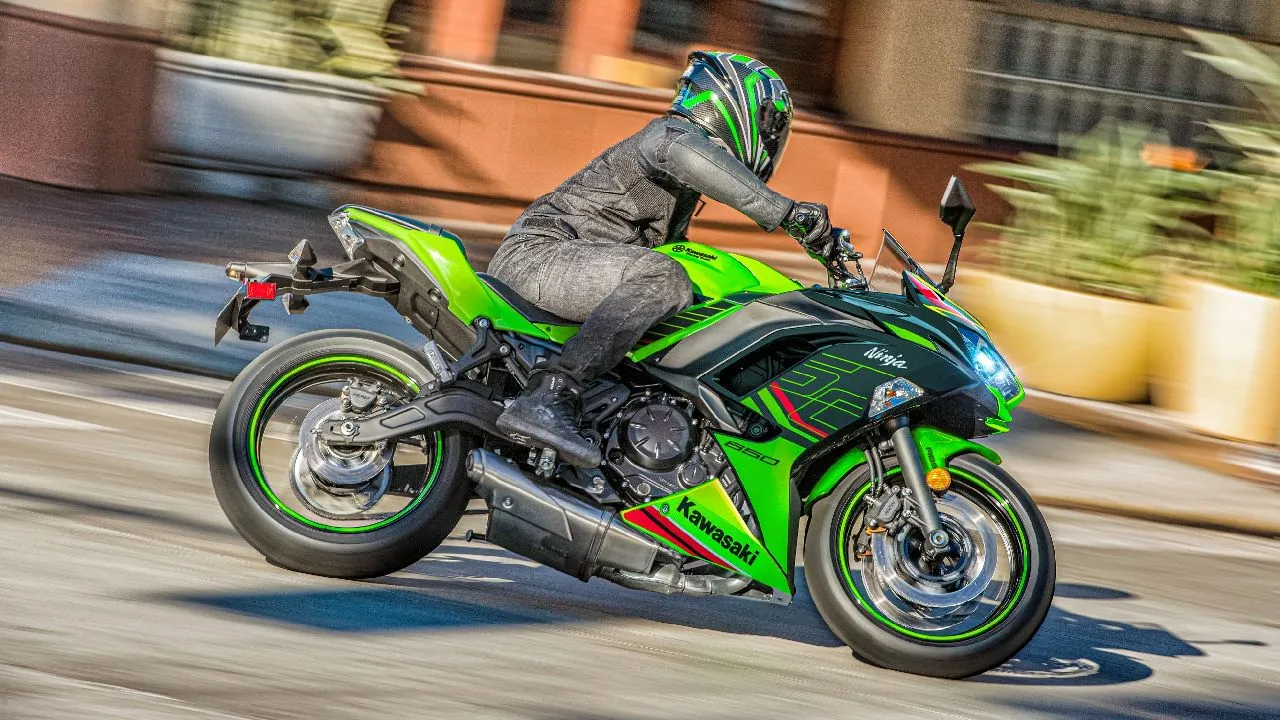
-(1).webp)
-(1).webp)
.webp)
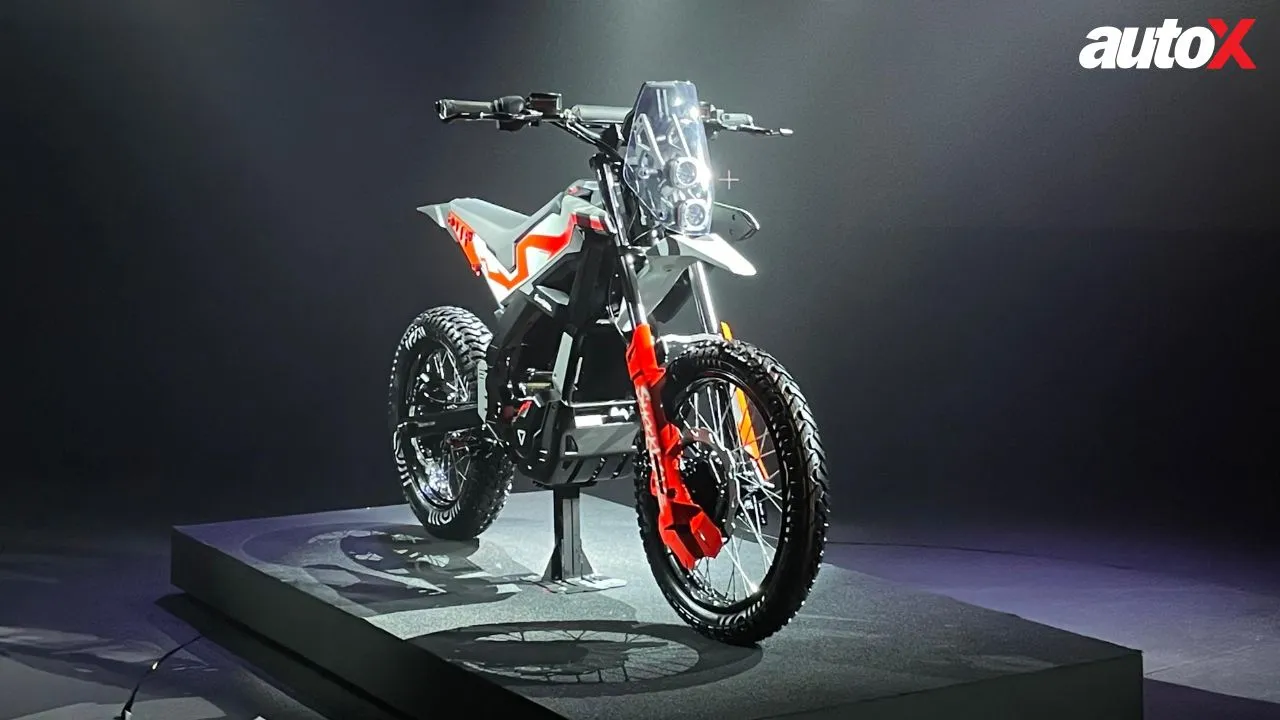
Write your Comment on